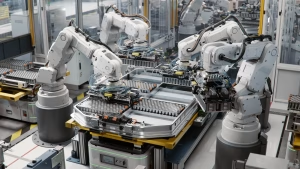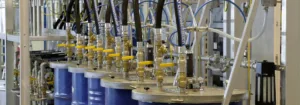Updated: Oct 7, 2025
Mastering Brushless Motor Control for Precision and Performance
Brushless motors—also known as BLDC motors (Brushless DC Motors)—have transformed modern engineering. From aerospace and robotics to automotive systems and industrial automation, they are valued for their high efficiency, compact size, and long service life.
However, controlling brushless motors effectively requires a solid understanding of their electronic commutation, speed control methods, and system integration. This guide explains how brushless motors work, the principles behind their control systems, and key steps to pilot them safely and efficiently.
Understanding Brushless Motors
Unlike traditional brushed DC motors, brushless motors rely on electronic commutation—using electronic controllers instead of physical brushes to switch current between motor windings.
This design eliminates mechanical wear, reduces maintenance, and enables precise speed and torque control, even at high efficiency levels.
Key Components of a Brushless Motor System
- Brushless Motor (BLDC Motor):
Converts electrical energy into mechanical rotation using permanent magnets and wound stators. - Electronic Speed Controller (ESC):
Regulates voltage and current supplied to the motor, controlling its speed, torque, and direction. - Microcontroller or Flight Controller:
Generates PWM (Pulse-Width Modulation) signals that tell the ESC how to drive the motor.
Together, these components form a closed-loop system that allows precise motor control for applications ranging from industrial robotics to drones and automated production lines.
Basic Principles of Brushless Motor Control
Sensorless Control
- Uses back-EMF (Electromotive Force) sensing to determine rotor position.
- The ESC analyzes voltage feedback from the motor windings to estimate the rotor’s position and adjust timing.
- Cost-effective and simple, but can be less accurate at low speeds.
Best for: Compact applications where cost and simplicity are priorities (e.g., fans, pumps, drones).
Sensor-Based Control
- Uses Hall Effect sensors to directly detect rotor position.
- Provides accurate real-time feedback for smoother commutation and faster response.
- Slightly higher cost due to additional components, but enables superior precision and stability.
Best for: Robotics, automotive systems, and automation tasks that require precise torque control.
How to Pilot a Brushless Motor: Step-by-Step
1. Select the Right Motor and ESC
- Match the motor’s KV rating (RPM per volt) to your desired speed and torque.
- Choose an ESC that supports the correct current and voltage range for your motor.
- Check for compatibility with your control interface (PWM, CAN, or serial communication).
2. Connect the Motor and ESC
- Connect the motor’s three phase wires to the ESC’s output terminals.
- Wire the ESC’s power supply and signal inputs to the appropriate source and microcontroller.
- Ensure correct polarity and insulation to prevent short circuits.
3. Configure the Microcontroller
- Program the microcontroller to generate PWM signals that set motor speed and direction.
- Adjust frequency and duty cycle to fine-tune motor response and efficiency.
4. Calibrate the ESC
- Follow the ESC’s calibration procedure to establish throttle endpoints and ensure smooth operation.
- Verify that the motor responds accurately to control inputs before full-power testing.
5. Test and Tune
- Wear protective gear such as gloves and eye protection.
- Begin testing at low power levels.
- Disconnect power before wiring or configuration changes.
- Use properly rated ESCs and wiring to avoid overheating or short circuits.
Common Applications of Brushless Motors
Brushless motors power a wide range of industries, including:
- Industrial Automation: Precision motion control, conveyors, and robotic arms.
- Aerospace: UAV propulsion and control systems.
- Automotive: Electric vehicles (EVs), pumps, and fans.
- Medical Devices: Surgical tools and diagnostic equipment.
- Consumer Electronics: Drones, power tools, and high-performance cooling systems.
Their high power-to-weight ratio, long lifespan, and maintenance-free operation make them a leading choice for next-generation engineering solutions.
Conclusion
Brushless motors combine efficiency, precision, and reliability, making them indispensable for modern automation and motion control. By understanding their components, control methods, and calibration steps, engineers can achieve exceptional performance in demanding applications.
With proper configuration and tuning, you can unlock the full potential of BLDC technology—improving productivity, safety, and sustainability across industries.
For additional resources and expert guidance, contact our specialists for tailored support.
- Start at low throttle and gradually increase speed while monitoring temperature, current, and vibration.
- Adjust ESC parameters or control algorithms (such as PID tuning) to achieve desired performance.


